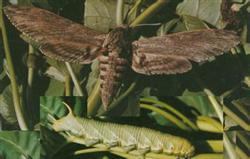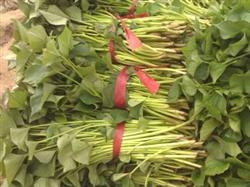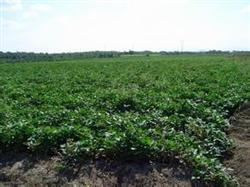Control techniques of sweet potato diamondback moth

Sweet potato moth belongs to Lepidoptera family, mainly harm sweet potato. Larvae eat sweet potato leaves and tender stems, serious when the leaves can be eaten up, affecting the yield is very large. In Henan Province, it has 3-4 generations a year and overwinters as pupae 10 cm below the soil. May of the following year. Adults lie dormant during the day and fly out after dusk. Adult phototaxis strong, can migrate far to reproduce harm. The newly hatched larvae have the habit of feeding on egg shells, and the older the insect age, the larger the food intake. Summer rainfall less, high temperature, conducive to the occurrence of sweet potato moth and damage. 1. Agricultural measures. Harrowing sweet potato fields in winter and spring, destroying their wintering environment, killing pupae and reducing insect sources; killing larvae in early stage combined with field management; using the habit of adults sucking nectar, killing them with syrup poison bait in the peak stage of adults, or killing them in places with abundant nectar sources to reduce the number of eggs in the field. 2. Chemical control. Spray 2.5% trichlorfon powder or 1.5% 1605 powder 1.5-2 kg powder per mu; or spray 90% crystalline trichlorfon or 80% dichlorvos emulsion 2000 times solution; or spray 20% Bt emulsion 500 times solution.
- Prev

Cultivation techniques of sweet potato sprouts and vegetables
Sweet potato sprouts, also known as sweet potato leaves and sweet potato leaves, belong to the genus Sweet Potato of the Convolvulaceae. it is a variety of sweet potato seedlings with tender stems at the tip of sweet potato seedlings selected by artificial selection. In Hong Kong, it is still known as "vegetable queen", "longevity vegetable" and "anti-cancer vegetable". It is a real green vegetable product. Nutritional ingredients.
- Next

Four key points of timely harvest of sweet potatoes
There are many farmers who think that it is not necessary to apply fertilizer to grow sweet potato. In fact, this is a wrong idea. Only by mastering the correct fertilization method can we make sweet potato with high quality and high yield. Look at the seedling condition in the branching period, the underground root network is formed, the potato pieces begin to expand, the fertility is strong, at this time the leaf area of potato increases, and the photosynthetic efficiency increases.
Related
- Where is it suitable to grow horseradish in China? it is expected to see the middle altitude horseradish in Alishan.
- How to prevent tomato virus disease reasonably? (Control methods included)
- Many people like to plant towel gourd on the balcony. What are the main points of this method and management?
- What crops can chili peppers be mixed with?
- Fertilization techniques and matters needing attention in Tomato
- What are the grafting techniques for peach seedlings in spring?
- Harm and control methods of root swelling disease of Chinese cabbage
- What are the pests of sweet potatoes? How to prevent and cure it?
- Symptoms, causes and Control methods of navel Rot in Tomato
- The cause of "Cucumber rotten bibcock" in Farmers' planting Cucumber and its Control Plan

